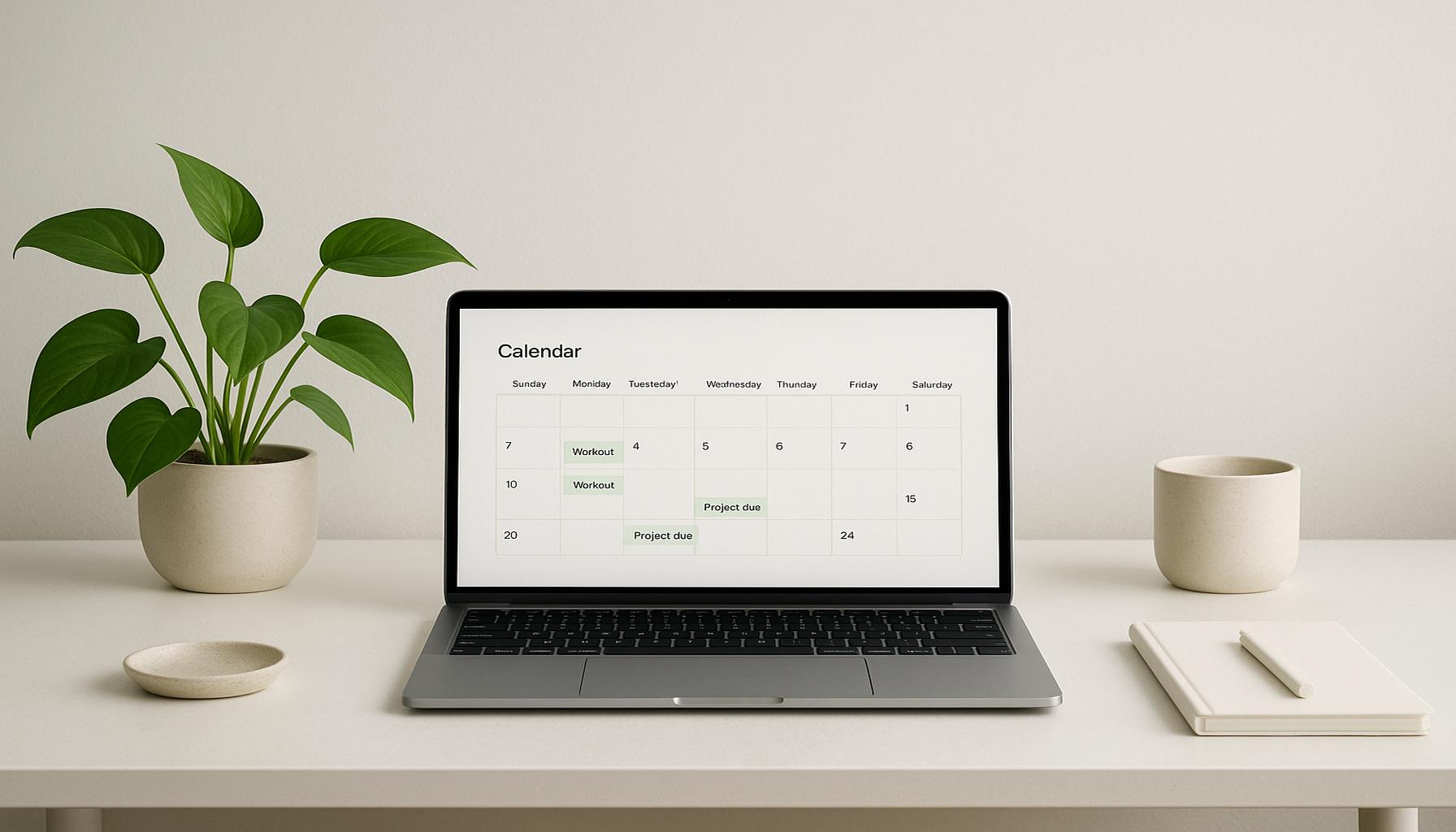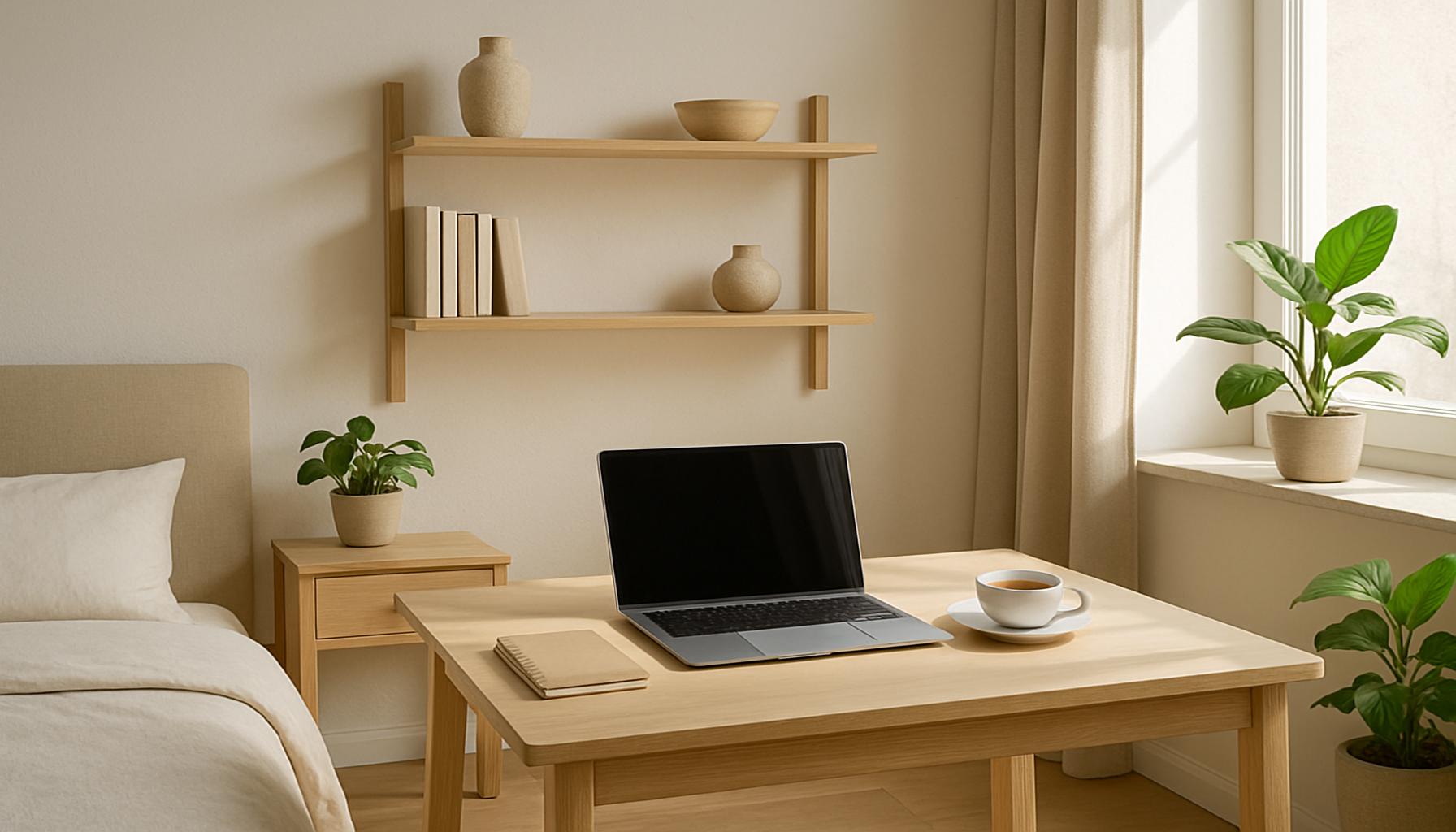Digital Minimalism Simplify Online Life Boost Productivity

Embracing Digital Minimalism
In an era where screens dominate our daily lives, the concept of digital minimalism has emerged as a beacon of clarity. This movement encourages individuals to strip away the digital clutter that often hinders both focus and productivity. By prioritizing intentional use of technology, we can reclaim our time, mental space, and overall well-being.
Digital minimalism is a response to the overwhelming influence of technology in the modern world. Studies show that the average person spends over three hours a day on their phone, often engaging in activities that offer little value or satisfaction. This movement isn’t merely about reducing screen time but about fostering a healthier relationship with technology. It challenges us to ask: Are we using our devices in ways that support our goals and aspirations?
As people seek greater personal organization, understanding digital minimalism becomes increasingly relevant. It’s not a call to abandon technology; instead, it’s about making conscious choices. By focusing on what truly matters, individuals can achieve a sense of balance and tranquility. Moreover, this approach can lead to significant improvements in personal and professional life, such as enhanced productivity, improved mental health, and stronger relationships.
Top 5 Strategies to Simplify Your Online Life
In this article, we will explore the Top 5 strategies that can help you simplify your online life. These actionable tips will guide you towards a more productive and fulfilling digital presence:
- Audit Your Digital Life: Regularly evaluate the apps and services you use. Eliminate those that do not contribute positively to your life.
- Limit Notifications: Noise from notifications can be overwhelming. Customize settings to only receive alerts that are essential.
- Schedule Tech-Free Time: Designate certain hours each day to be free from digital distractions, fostering mindfulness and focus.
- Adopt a Decluttered Desktop: A clean digital space reduces stress and helps you find what you need more quickly.
- Mindful Consumption: Focus on consuming content that enriches your life rather than simply fills time.
By embracing digital minimalism, you are not just decluttering your digital environment but also enriching your overall life experience. Each of these strategies offers a pathway to a more intentional way of living in our increasingly connected world. As you delve into these practices, you might discover a newfound depth of focus and creativity that

Top 5 Digital Minimalism Strategies to Simplify Your Online Life and Boost Productivity
In our increasingly digital world, the way we engage with technology not only shapes our daily routines but also has profound implications for our mental well-being, productivity, and capacity for innovation. With smartphones, computers, and digital media occupying our time and attention, it becomes crucial to find a balance that enhances, rather than detracts from, our lives. Digital minimalism is a philosophy and strategy that promotes a deliberate and mindful use of technology. Here, we explore five key strategies to simplify your online life and boost your productivity through digital minimalism.
5. Declutter Your Digital Space
Many of us have experienced the stress that arises from a messy physical space. Surprisingly, digital spaces can be equally overwhelming. The chaos of hundreds of unorganized files, unused apps, and a cluttered inbox can impinge on your peace of mind. Decluttering your digital world is the foundational step toward digital minimalism, akin to a breath of fresh air. Start with your core devices, such as your computer and smartphone, and dedicate time to organizing files, deleting unnecessary apps, and purging your email of spam and unread messages.
- Unsubscribe from newsletters and email notifications that don’t add significant value to your life.
- Delete duplicate files and images that consume unnecessary space.
- Create a system of folders for important documents, and maintain this structure to avoid future clutter.
By creating a neater digital environment, you set the stage for better focus and efficiency, allowing every session at your device to be optimal and stress-free.
4. Limit Notifications
The pervasive presence of notifications in our lives is undeniable. Every beep, vibration, or flash can be a source of distraction, pulling your focus away from meaningful tasks. Studies have shown that it can take up to 25 minutes for the brain to recalibrate focus after a significant distraction. Limiting notifications is crucial for maintaining productivity and mental clarity.
- Turn off notifications for non-essential apps, especially social media platforms that can wait for scheduled checks.
- Establish specific times during the day for emails and messages, turning off notifications outside these periods for uninterrupted work.
- Leverage the “Do Not Disturb” mode on your devices during critical work hours to ensure deep work and concentration.
By managing your notifications strategically, not only do you diminish distractions, but you also curate an environment conducive to sustained periods of concentration and efficiency.
3. Prioritize Quality Over Quantity in Digital Consumption
The digital age provides an abundance—if not excess—of information and content. Mental clutter is inevitable when we attempt to consume everything available. Embracing a philosophy that values quality over quantity is vital for enriching both your personal and intellectual life. Instead of becoming overwhelmed by sheer volume, focus on content that truly adds value.
- Curate a selection of trusted news sources and information channels that prioritize factual and insightful reporting.
- Invest time in long-form content, such as in-depth articles, books, or white papers, that extends your understanding rather than cursory skimming through countless headlines.
- Immerse in educational resources, such as podcasts and documentaries, that align with your personal and professional interests.
This disciplined approach lowers the cognitive load and compels you to immerse in content that nurtures your curiosity and knowledge comprehensively.
2. Use Productivity Tools to Manage Tasks
Contrary to the notion that digital minimalism is about rejecting technology, it involves the deliberate use of tools that amplify productivity and manageability of tasks without adding digital clutter. Leveraging productivity tools that focus on minimalism allows you to efficiently organize tasks and projects, while keeping your digital environment streamlined.
- Trello: This tool employs a visual approach to manage projects, using boards and cards to track progress in an intuitive way.
- Notion: A flexible, all-in-one workspace that accommodates notes, documents, databases, and more, designed to suit various workflow needs.
- Todoist: Known for its simplicity and ease of use, Todoist is excellent for task management and tracking.
These tools are examples of how technology can be harnessed to foster efficiency without succumbing to digital chaos, thus supporting a clear and measured approach to productivity.
1. Embrace Digital Detoxes
The most transformative aspect of adopting a minimalist digital lifestyle is embracing regular digital detoxes. Stepping away from technology periodically allows for the rejuvenation of your concentration and creativity. Contrary to the fear of missing out, disconnecting offers a refreshing opportunity for introspection and connection with the non-digital world.
- Commit to tech-free periods, such as weekends, where you can engage fully in offline activities or meaningful interactions.
- Pursue outdoor adventures or hobbies that you’ve neglected, letting nature reset your mental state and invigorate your perspective.
- Use time away from screens to reflect on personal goals or engage in creative pursuits such as writing, drawing, or crafting.
By dedicating time for digital detoxes, you open the space for personal growth, exploration, and a revitalized sense of self that ultimately enhances productivity and wellbeing.
The adoption of these five digital minimalism strategies can significantly transform your online experience into one that is more organized, productive, and fulfilling. By simplifying your digital interactions and focusing on what is truly meaningful, you unlock the potential for deeper concentration, innovative thinking, and a richer quality of life.
| Digital Decluttering | Characteristics | Advantages | Disadvantages | Ideal Users |
|---|---|---|---|---|
| Digital Decluttering | The process of removing unnecessary files, emails, and apps to improve organization. | Increases focus by minimizing distractions and enhances productivity. | Can be time-consuming and may require a change in habits. | Those overwhelmed by digital chaos or with extensive digital content. |
| Time Management Apps | Applications designed to help organize tasks and manage time effectively. | Allows prioritization of tasks, presenting clear deadlines and responsibilities. | Some users may find them overwhelming due to too many features. | Individuals looking to boost productivity and manage multi-tasking. |
| Mindful Consumption | Being selective about the digital content you consume. | Reduces information overload and promotes well-being by engaging with quality content. | May require conscious effort to unlearn habitual browsing behavior. | Anyone feeling stressed or distracted by excessive digital information. |
| Embracing Automation | Utilizing tools and apps to automate repetitive digital tasks. | Saves time on routine tasks allowing for greater focus on critical work. | Initial setup times may be high, and some applications may have a learning curve. | Professionals and entrepreneurs with numerous repetitive activities. |
Emphasizing digital decluttering, it is essential to recognize the significant impact it may have on productivity levels. By actively engaging in removing digital clutter, individuals can cultivate a much-needed space for creativity and focus. Moreover, this process encourages one to evaluate the essence of data retention and the relevance of digital tools.Time management applications present an excellent opportunity for users seeking structured approaches to their daily activities. By leveraging these tools, users can achieve a higher level of organization, thereby aligning their tasks with prioritized goals. However, it is crucial to select an app that matches personal workflow to maximize effectiveness.A shift towards mindful consumption stands as a potent strategy for navigating the vast digital landscape. Individuals are encouraged to engage with content that aligns with their interests and values to foster mental well-being while filtering out the noise of unnecessary information.Embracing automation represents another forward-thinking framework for boosting productivity. With a plethora of tools available, automation simplifies mundane tasks, allowing users to devote their time and energy to projects that genuinely matter. While the initial learning curve may appear daunting, the long-term benefits of reduced manual inputs justify the effort required. Adopting these digital minimalism strategies can lead to enhanced organization and productivity levels, fundamentally transforming their online experience for the better.
Frequently Asked Questions about Digital Minimalism
What is digital minimalism, and how does it help increase productivity?
Digital minimalism is a lifestyle approach that encourages individuals to be intentional with their online presence by focusing on using technology to support their values and goals. By eliminating unnecessary digital clutter, such as relentless notifications and excessive app usage, individuals can create more time and mental space for productive activities. Moreover, it encourages a shift from passive consumption of content to active engagement in meaningful tasks, leading to heightened efficiency and focus.
How can I start implementing digital minimalism in my life?
To start implementing digital minimalism, begin by conducting a digital declutter. This involves assessing the software, applications, and platforms you actively use and removing or reducing what is non-essential. Establish clear boundaries for your digital habits, such as limiting screen time and setting specific periods during the day to check emails or social media. It is also useful to regularly audit your online activities to ensure they align with your personal objectives and provide value to your life. By doing so, you foster a digital environment that prioritizes quality over quantity in your online engagements.
Are there any tools or techniques that can support my journey into digital minimalism?
Several tools and techniques can aid you on your digital minimalism journey. Apps like Freedom or Focus@Will help manage screen time and silence distractions, whereas browser extensions such as uBlock Origin declutter online spaces by blocking ads. Techniques such as the Pomodoro Technique encourage focused work intervals followed by brief breaks, promoting productivity without burnout. Additionally, digital decluttering sessions, where you periodically clean your digital devices and reorganize your files, contribute to maintaining a streamlined digital workspace.
Can digital minimalism impact my mental health positively?
Adopting digital minimalism can have a significant positive impact on mental health. By reducing the constant influx of information, you mitigate stressors like information overload, which often contribute to anxiety and decreased attention spans. Creating a mindful digital environment allows for better focus, leading to improved cognitive functions and emotional well-being. By emphasizing intentional technology use, digital minimalism encourages individuals to build healthier relationships not only with their devices but also with themselves and those around them.
Conclusion: Embracing Digital Minimalism
As we navigate an ever-increasing digital landscape, the concept of digital minimalism presents itself as a vital tool for enhancing both personal organization and productivity. By adopting strategies such as decluttering digital spaces, limiting notifications, prioritizing quality over quantity, and curating intentional digital interactions, individuals can reclaim their time and focus.
The core principles derived throughout this article emphasize that digital minimalism is not just about reducing digital clutter but about creating space for what truly matters. By identifying our digital habits, setting clear boundaries, and making conscious decisions about our online activities, we can create a more balanced and fulfilling life. Moreover, by implementing these strategies, users can improve productivity and find greater satisfaction in both personal and professional spheres.
The Importance of Intentionality
Digital minimalism urges us to adopt a mindset of intentionality. Rather than succumbing to the pervasive lure of constant connectivity, it challenges us to question the necessity and relevance of our digital engagements. This mindset not only supports a more organized digital environment but also encourages the pursuit of meaningful offline experiences. Ultimately, the goal is to craft a digital life that aligns with one’s values and priorities while fostering genuine connections.
As we advance in this digital age, understanding and embracing digital minimalism is crucial for maintaining sanity and bolstering productivity. While the challenge is ongoing, the rewards of a simplified digital life are profoundly transformative. It’s an invitation for all to explore and adopt these strategies, paving the way for a more intentional and enriched digital existence.


